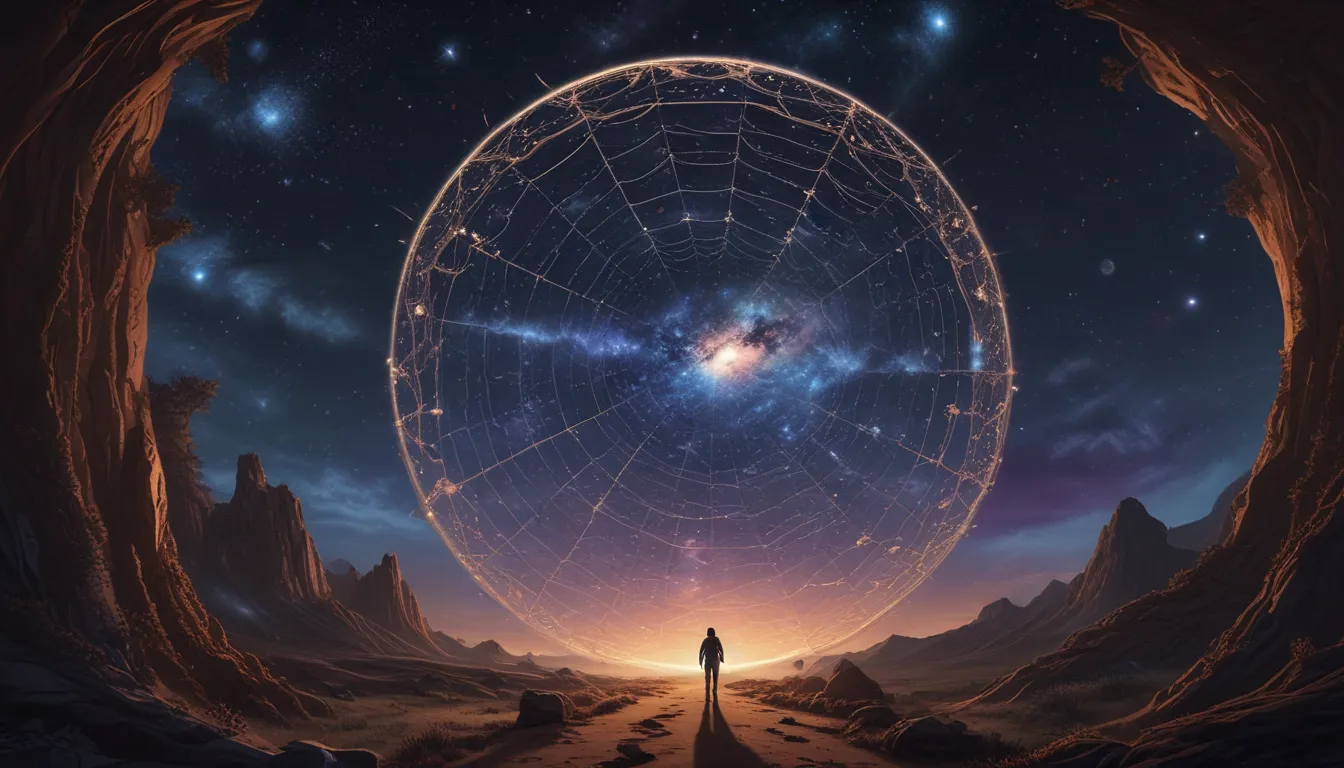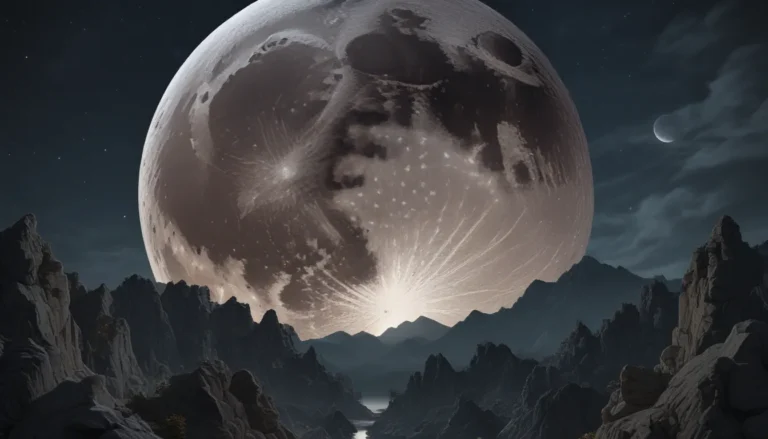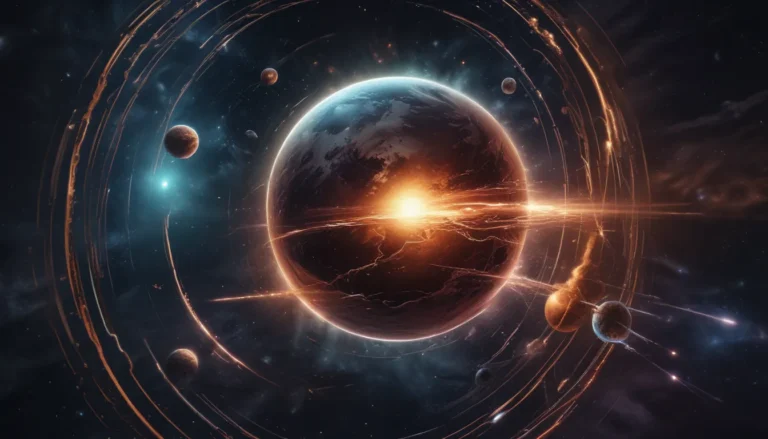The pictures we use in our articles might not show exactly what the words say. We choose these pictures to make you interested in reading more. The pictures work together with the words but don’t take their place. The words still tell you the important facts.
Welcome to the cosmic web, a mesmerizing structure that spans the vast expanse of the Universe, connecting galaxies, clusters, and superclusters in a cosmic tapestry of unimaginable proportions. This intricate network of celestial objects has intrigued astronomers and astrophysicists for years, offering valuable insights into the formation and evolution of our cosmos. Join us as we delve into the cosmic web and uncover nine fascinating facts about this awe-inspiring phenomenon that sheds light on the mysteries of the Universe.
The Cosmic Web: A Marvelous Tapestry of Interconnected Galaxies
The Cosmic Web is a remarkable structure that permeates the universe, linking galaxies and galaxy clusters through immense cosmic filaments. This network of intergalactic threads forms a web-like pattern spanning billions of light-years, providing a glimpse into the underlying structure and evolution of our cosmos.
Dark Matter: The Mysterious Building Blocks of the Cosmic Web
One of the most intriguing aspects of the Cosmic Web is its composition, predominantly made up of dark matter—an elusive substance that accounts for a significant portion of the universe's mass. By studying the cosmic web, scientists can unravel the distribution and behavior of dark matter, shedding light on its role in shaping the universe.
Galactic Connections Through Cosmic Filaments
The Cosmic Web intricately connects galaxies through giant cosmic filaments composed of dark matter and gas. These filaments act as cosmic highways, facilitating the flow of matter and energy between galaxies, shaping the distribution of celestial objects in the Universe.
Massive Structures: Galaxy Clusters within the Cosmic Web
The Cosmic Web encompasses some of the largest known structures in the universe, including massive galaxy clusters consisting of thousands of galaxies held together by gravity. These clusters serve as junctions where several cosmic filaments intersect, forming cosmic superhighways of matter and energy.
Insights into the Early Universe Through the Cosmic Web
Studying the Cosmic Web provides valuable insights into the early universe. By examining the distribution and properties of cosmic filaments, scientists can infer the conditions present in the early stages of cosmic evolution, shedding light on the formation and growth of galaxies throughout cosmic history.
Gravity: The Architect of the Cosmic Web
The formation of the Cosmic Web is primarily driven by the force of gravity, pulling matter towards high-density regions over billions of years. This process results in the formation of galaxy clusters and intricate cosmic filaments that shape the large-scale structure of the universe.
Dark Energy: A Pivotal Player in Shaping the Cosmic Web
Dark energy, the mysterious force behind the accelerated expansion of the universe, plays a significant role in shaping the Cosmic Web. Its repulsive nature stretches cosmic filaments, creating vast cosmic voids between galaxy clusters and influencing the cosmic landscape we observe today.
Bridging the Visible and Invisible Universe
The Cosmic Web acts as a bridge between the visible and invisible components of the universe, offering insights into the distribution and behavior of dark matter. Through the study of the cosmic web, scientists can unravel the mysteries of the cosmos and gain a deeper understanding of the universe's fabric.
A Center of Scientific Exploration and Research
The Cosmic Web has become a subject of intense scientific research, fueling exploration and discovery. Through intricate computer simulations and sophisticated observational techniques, researchers aim to unravel the cosmic web's intricacies, seeking answers to fundamental questions about the origins and evolution of our universe.
In conclusion, the Cosmic Web is a breathtakingly intricate structure that connects galaxies and galaxy clusters, offering valuable insights into the formation and evolution of the Universe. By delving into its mysteries, we can expand our understanding of the cosmos and our place within it, showcasing the interconnectedness of celestial bodies and the secrets that lie beyond our reach.
FAQs about the Cosmic Web
- What is the cosmic web?
-
The cosmic web is a vast network of galaxies, gas, and dark matter that spans the entire universe, interconnected through cosmic filaments.
-
How was the cosmic web discovered?
-
The cosmic web was discovered through observations made by telescopes, studying the distribution of galaxies and their clustering patterns.
-
What is the role of dark matter in the cosmic web?
-
Dark matter plays a significant role in the formation and maintenance of the cosmic web's intricate structure through its gravitational pull.
-
How does the cosmic web influence galaxy formation?
-
The cosmic web plays a crucial role in galaxy formation, with galaxies forming along its filaments where gas and dark matter accumulate, triggering star formation.
-
Are there any gaps or voids in the cosmic web?
-
Yes, the cosmic web features voids or gaps where fewer galaxies and less matter exist, maintaining its overall structure.
-
Can we directly observe the cosmic web?
-
While we cannot observe the cosmic web as a whole, we can study it through its influence on galaxies and the distribution of matter in the universe.
-
What are the implications of studying the cosmic web?
-
Studying the cosmic web allows scientists to understand the large-scale structure of the universe, galaxy formation, and the distribution of matter, providing crucial insights into the cosmos.
-
Are there current theories or models explaining the cosmic web?
-
Various theoretical models in cosmology attempt to explain the formation and evolution of the cosmic web, such as the hierarchical structure formation model and the cold dark matter model.
-
Are there ongoing research and observations focused on the cosmic web?
- Scientists continue to conduct research and make observations to enhance our understanding of the cosmic web, with projects like large-scale galaxy surveys and simulations providing valuable insights.
Embark on a journey through the cosmic web, uncovering the mysteries and wonders that await within this intricate structure of the universe. Explore the interconnectedness of galaxies, dark matter, and cosmic filaments as you delve deeper into the cosmic tapestry that binds our cosmos together, offering a glimpse into the vast expanse of the Universe and the secrets it holds.






